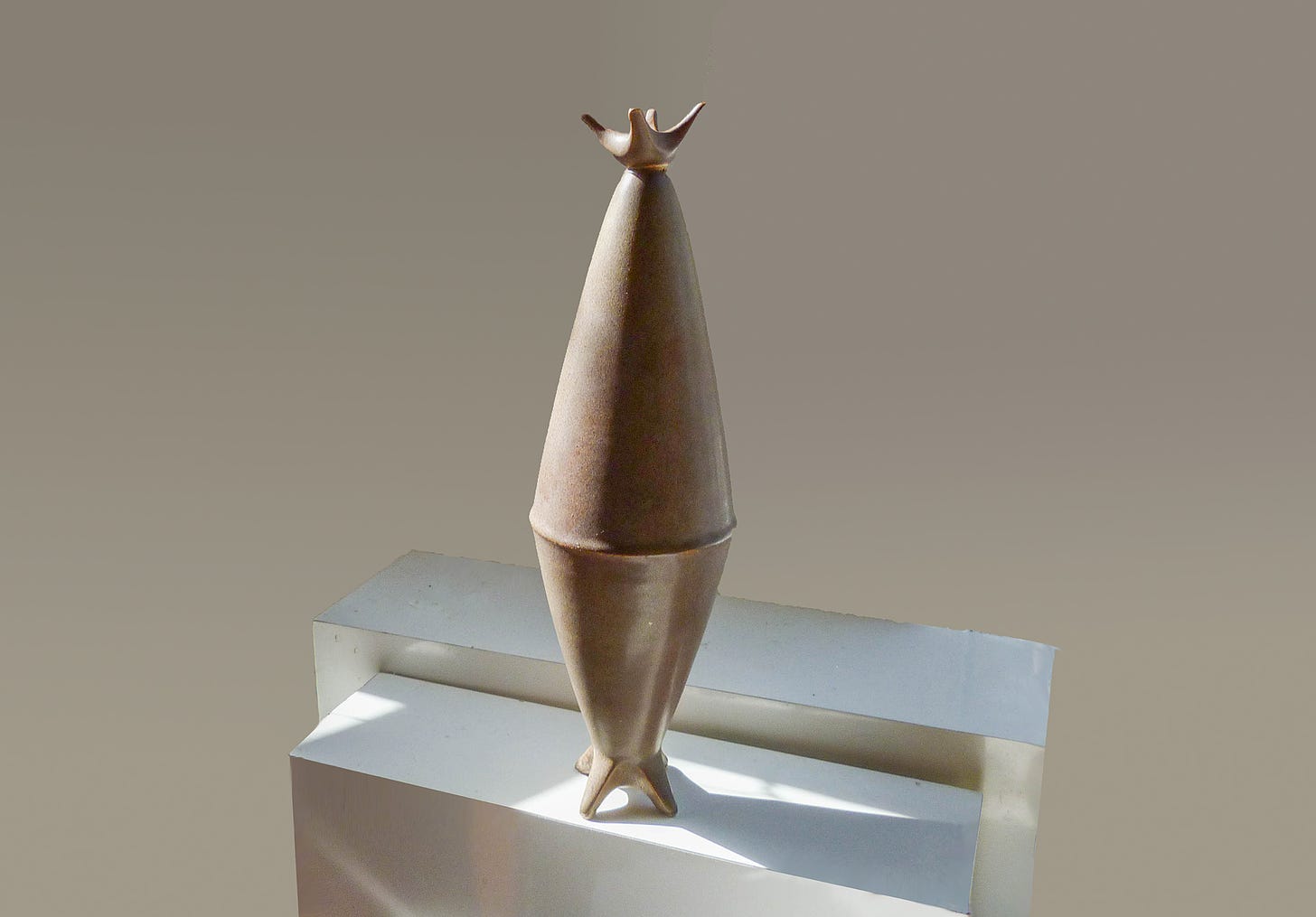Ruminating on Big Data, Outlier Data and Misapplied, Codified Newspeak
And a Flash Sale with a Special Discount on Andersen Design

The paper that I have been reviewing many times over during the last six months, uses the term “big data”. I said that the author needs to define the term at the outset and include some examples of how big data is different than anything that we have known before or could do before.
Afterwards Orcid sent notice that my review had been added to their record, and I looked around Orcid and found The Lens a site that brings together patented scholarly and scientific research. This is “big data”. I also found that one can list funding that one has received for one’s work on Orcid but the list does not include The Field or individual fiscal sponsorship funding, which is so often the case, making it Outlier Data.
On discovering The Lens I wondered if the §1921. Maine Patent Program that maintains that services in assisting in patent applications are due “a reasonable percentage of royalties”, is supported in other places, and if so, how widespread is such a policy and in which types of governmental systems is it most active? In the American free enterprise system services are paid with a one-time fee for the service as such a task is a one-time task with specific rules, not the complex and long-term work process that goes into Intellectual property created by the original authors of innovative ideas, which are traditionally rewarded by royalties.
Title 10: COMMERCE AND TRADE
Part 4: TRADEMARKS AND NAMES
Chapter 317: MAINE PATENT PROGRAM
2. Applicant's costs and duties. An applicant accepted by the program shall pay the costs of the patent search and opinion and for patent prosecution if the final product is manufactured or licensed out of state. An applicant shall pay to the program a reasonable percentage of the royalties for any successful innovation patented through the program. (emphasis by author)
[PL 1999, c. 731, Pt. WWW, §1 (NEW).]
In my vision for a workers-in-residence zone, someone could set up a patenting service and charge a service fee and be very competitive with Maine State Inc’s fees for patent services provided through the University of Maine!!
Why does the codified University’s patent policy use a vaguely defined term such as “a reasonable percentage”? I am guessing is because of how percentages are defined the University of Maine Statement of Policy Governing Patents and Copyrights :
It is hereby agreed that: For the first $100,000 of cumulative net income the default minimum distribution shall be as follows: 50% to the faculty creator / inventor 50% to the University For cumulative net income in excess of $100,000 the default minimum distribution shall be as follows: 50% to the faculty creator / inventor 50% to the University (emphasis by author)
Read full history of How The Morrill Act Gave Birth to Public Ownership of Private Intellectual Property in the USA, HERE!
When factoring the two policies against each other, the university policies have conflated a bureaucratic process with an innovative process, assuming that the patent department of the university, which would fall under the category of “faculty", is factored into the minimum 50% due the faculty creator / inventor, and not to the minimum 50% due to the university as owner of the facilities and equipment, Perhaps each side contributes for services to the University patent office as they are both operating as free enterprises where paying for services fall under the cost of doing business.
Imagine how difficult it would be to develop innovative ideas if every service one contracted demanded a “reasonable share” of the royalties that innovative work produces. (Imagine if cleaning services were paid with a percentage of the ownership of the property they clean!) The innovator would not only pay for one-time services once but would continue paying for them forever. Is this a policy that encourages “innovation” that is in such high demand? Do the legislatures who replace words like “restructure” with “innovation” understand anything about what an innovative process involves versus other types of processes or do they just use words because they are the currently codified newspeak?
I didn’t search that topic, instead I entered “ceramics” in the search field. There are 641, 488 patents listed for ceramics. and 30, 845 patents listed for ceramic glazes. The average bureaucrat and politician does not realize that although ceramics is an ancient technology, it is also a contemporary one, probably even used in the space technology that will build the ark, using the talents and skills of the workforces, for the use of the overlords as a means to escape from the planet they destroy for profit.

The Network For Good agent whom I would like to engage as my fundraising support (included in my first stage fundraising goal) understood, without needing to be told, that a ceramic research center that is focused on decorative arts can develop surfaces that can be applied in any industry, but my local community does not recognize that value as developers promote a 89-million-dollar school with “maker” facilities and all of it tied in to the University of Maine with its claims to intellectual property ownership of any projects using its facilities. The reason that this particular agent understood the relationship between all ceramic research is because he has a background working in ceramic technology. In other words, he has process engagement to enlighten his understanding.
I should be learning about ceramic patents or hiring someone to do that work. Patent’s can apply if I am successful in implementing my vision for how Andersen Design productivity assets should be used, or if I decide to let go of that for lack of a community that supports it. However, everything takes time and I eram still working alone so that is why I need to change my current financial status from living on the edge to having a cushion.
Mackenzie Andersen is a sponsored artist with The Performance Zone Inc (dba The Field), a not-for-profit, tax-exempt, 501(c)(3) organization serving the performing arts community. Contributions to The Field earmarked for Mackenzie Andersen are tax-deductible to the extent allowed by law. For more information about The Field, or for our national charities registration, contact: The Field, 75 Maiden Lane, Suite 906 New York, NY 10038, phone: 212-691-6969. A copy of our latest financial report may be obtained from The Field or from the Office of Attorney General, Charities Bureau, 120 Broadway, New York, NY 10271.
Mackenzie’s Profile on the Field
My first stage fundraising goal looks like this:
· Supplement my own income by $2000.00 per month or 24000.00 per year.
· Hire the services of non-profit fundraising consultants at $200.00 per month or $2400.00 per year
· Hire the services of a private equity firm at $5000.00
Total minimum first-stage fundraising goal is $31, 400.00
You can read the reasoning for these goals in greater detail here.
Back to the topic.
Then I searched The University of Maine and found 5229 patents. I wonder how much residual income that brings in for the university and its faculty?

I am watching a Korean drama on Netflix. Korean dramas often have exquisite cinematography with slow paced story lines that proceed moment by moment in the fleeting gazes of a character’s eyes or a lingering smile as is the case in The Devil Judge Overall. Korean series have captured corporate culture vividly as a modern-day caste system and it makes no difference if it is a for-profit or non-profit corporation, they are all in it together as a mutual collaboration of concentrated wealth. The Devil Judge includes a portrait of a foundation solving the homeless problem with massive densely packed grid housing such as HP 1489 is designed to unleash across Maine. I am still watching the drama so I don’t know where it is going with that topic yet, but the idea of a hidden ulterior motives to the housing, called something like ”the dream project”, has already entered the plot. Korean corporate dramas frequently end with the hero leaving the corporate grid to start a small business, so Korean narratives share my wavelength, or algorithm in more contemporary terms. They also always feature food which is always very visually elegant and part of a friendship bonding process. I am in love with Korean culture and people.
Meanwhile, back in the USA, there are a couple of organizations developing artists communities that I would, if I could, collaborate with, but I am not anticipating that they will respond to my application or communication as that is what I am accustomed to in Maine. I have written to so many organizations and municipalities and the most usual response is none whatsoever. The prevalent mindset in Maine does not recognize what Andersen Design achieved nor the assets it produced as having any economic development value. I approached the organizations with a concept outside of their own paradigm but very relevant to it, but usually that makes one “over-qualified”, for lack of a better term. The current situation in Maine is that the Legislature and Administration have decided to accept short-term rentals as default zoning for the entire state. so that Maine will be one continuous short term rental campus and any other purpose has to carve out its own “priority zone” where the terms of the priority zone will allow it to exist. One organization is trying to create an alternative selling venue to Etsy and so its focus is on selling and does not incorporate housing. It has the most developed strategy for achieving its mission of the two organizations. The other organization is trying to develop a concept of communal housing for artists. The second organization has a fair amount of people who have signed up on its Facebook page but I do not see any strategy in place for how this would come about.
Artists are entrepreneurs and so I extended the concept of “artists in residence to “workers in resident”. After all artists need other services (such as patent services) and the remote workers movement is still strong and both groups need living spaces that also include work spaces.
I wish that I could collaborate with these groups and they could join together to promote “priority zones” for their mutual interests. The so-called “priority zone” carved out by the Maine Legislature is designed to serve one priority- corporate developed and owned concentrated housing for “the workforce”, a term that signifies employees who work at corporate headquarters or some other type of facility and so in the view of developers, the “workforce” does not need much living space of its own. The Boothbay Regional Development Corporation appears to be reducing the size of the “units” to half the size that is generally considered a comfortable household size. That means even a remote office worker would have a hard time creating space in the home where they can work, and it is even more difficult for anyone making a product.
The developers of the centrally managed state are as occluded to the reality of the remote workers and other movements saying no to corporate culture. as they are to climate change and that is a paradigm needs to change. I have ideas about essential elements that need to be included to expand the paradigm of the future development of communities. I should follow suit of the other groups and create a Facebook Page and a webpage for the idea of workers in residence zoning.
But that all takes time- and a financial cushion, so please consider donating to my continually evolving cause!

Another major change has occurred that will affect my financial stability as well as the financial stability of many small entrepreneurs and those trying to make the change away from corporate culture. As of September 12th, PayPal will discontinue backup funding for its business debit card. This means that there will no longer be instant or overnight transference of funds from a bank account to PayPal. Instead, such transactions will take three days. I do not know if that will also apply to transactions moving in the other direction, from PayPal to a bank account. My thought on this is that the money does not just dematerialize for three days after it is taken from one’s bank account, and the funds aren’t being delivered by stage coach, so what is happening to all of those transfers during that three-day gap between the money being extracted from a bank account and credited to PayPal account? I suspect that PayPal makes money on those funds during that time. This is what Jan D Weir describes as “financialization” wherein financial institutions make money without actually producing anything, just by charging rent on funding, so to speak.
I think a lot of the small entrepreneurial community will be transferring out of PayPal. I know I will be, another tact that takes time to study what other solutions have to offer,
So that makes my own financial situation even dicier than it already is. To help build that cushion, I am offering a 25% discount on Andersen Design, which at least until the 12th delivers instantly available funding, which is what I need in preparation for the 12th of September,
Flash Sale Funding Target: $1200.00
Flash Sale Ends on September 12th. Making this target will help me to weather this storm till my ship comes in!
So please help me to create a cushion by taking advantage of your 25% discount with coupon code CREATE CUSHION, applies site-wide at Andersen Design Vintage and Special Editions




